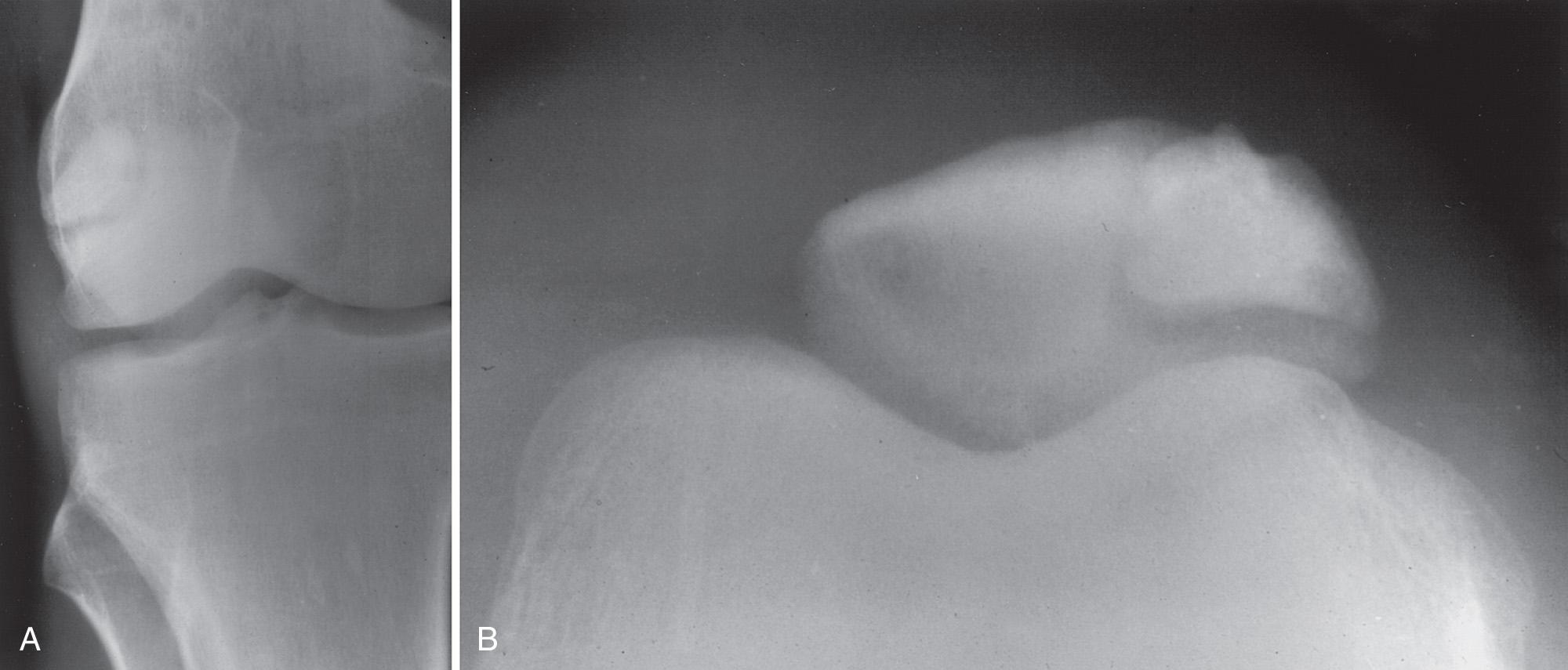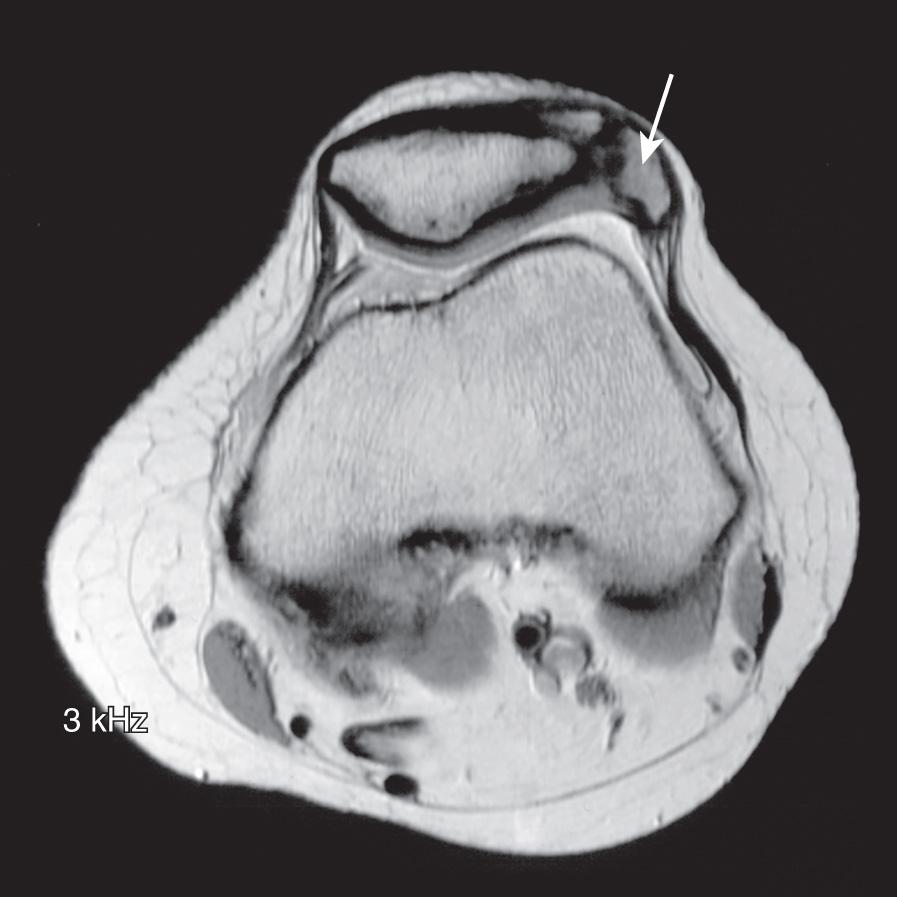Physical Address
304 North Cardinal St.
Dorchester Center, MA 02124
* The authors thank John N. Insall for his thoughtful guidance and contributions to previous editions of this chapter.
Variations of normal anatomy and frankly abnormal structures are occasionally encountered by the physician. Without a fundamental understanding of the more common abnormalities, it may be difficult to identify and interpret the significance of these structures. The goal of this chapter is to provide an overview of some of the reported structural anomalies and information regarding their clinical relevance. It is not our intent to review anatomic abnormalities resulting from traumatic or degenerative causes. In addition, developmental phenomena occurring as a result of disordered maturation in the pediatric population are reviewed elsewhere.
A number of major skeletal dysplasias, including proximal femoral focal deficiencies, tibial dysplasia, fibular aplasia, amelia, and phocomelia, involve the bones of the knee joint to varying degrees but are beyond the scope of this chapter. Here we emphasize abnormalities that may represent incidental findings in some patients but can have significant clinical implications.
Trochlear dysplasia may be relatively subtle or more marked. Although trochlea dysplasia has been identified as a key factor in developing pain and patellar instability, the clinical manifestations associated with dysplasia depend not only on the extent of the dysplasia but also on other anatomic factors; patella geometry, patella alta, abnormalities in the degree of tibial tubercle lateralization determined by a tibial tubercle to trochlear groove distance exceeding 20 mm on axial computed tomography (CT), incompetence of the medial patellofemoral ligament, and abnormalities in the muscular stabilizers of the patella all likely contribute. Symptoms may relate to chronic maltracking or frank dislocation of the patella. Pain related to the patellofemoral joint resulting from chronic patellar malalignment is typically manifested as an anterior knee ache when sitting with the knee flexed and as acute exacerbations during squatting, kneeling, and stair-climbing activities. On physical examination, crepitus from the patellofemoral joint, pain with patellar compression, and peripatellar tenderness may be noted. Specific radiologic criteria have been reported that define normal trochlear anatomy. The sulcus angle is defined on the Merchant view by the intersection of lines connecting the highest point of the femoral condyles to the deepest point of the femoral trochlea; the mean angle in normal knees is 130 to 137 degrees (range, 112 to 151 degrees). Significant differences in this angle have been reported in patients with recurrent patellar dislocation and chondromalacia patellae ( Fig. 2.1 ). The lateral to medial trochlear ratio is the ratio between the segments joining the highest point of the femoral condyles to the deepest point of the trochlea. A ratio greater than 1.7 indicates trochlear dysplasia. Dejour has defined four classes based on both conventional axial and lateral radiographs and axial magnetic resonance imaging (MRI) images. On axial MRI, type A dysplasia is defined by a fairly shallow trochlea; type B by a flat or convex trochlea; type C by asymmetry of the trochlear facets with a hypoplastic medial condyle; and type D by asymmetry of the trochlear facets plus vertical join and cliff pattern.

If nonoperative treatment, such as activity modification and physical therapy, fails to relieve symptoms, all anatomic factors that contribute to patellofemoral pain and instability must be considered and a surgical plan devised. Historically, lateral release and proximal realignment were used in patients with disabling symptoms and documented anatomic abnormalities. In carefully selected patients, 91% excellent and good results were achieved at intermediate-term follow-up by Insall et al. Currently, a detailed assessment of the multiple factors that can play a role in patellar instability should be performed. Rather than a single solution, treatment is directed at correcting the major problem(s) identified in any given patient and is presented elsewhere in this textbook. In summary, surgical intervention may include a single procedure or a combination of the following: proximal soft tissue realignment, medial patellofemoral ligament repair or reconstruction, distal tibial tubercle realignment, or trochleoplasty. For patients with severe dysplasia, especially for which other interventions have failed, trochleoplasty, or deepening and recontouring femoral trochlear groove, is becoming increasingly recognized as an important option. Outcomes reports in which trochleoplasty were used in these difficult cases have demonstrated satisfactory results, although it is clear that patients still demonstrate limitations in their activities.
Congenital absence of the patella and hypoplasia are extremely rare anomalies, especially as isolated findings. An association with other abnormalities has been reported, including ischiopubic malformations, and they have been described as part of the nail-patella syndrome (nail and patellar dysplasia, radial head subluxation and elbow malformation, renal abnormalities, and iliac horns). Other patellar dysplasias include duplication in the coronal and sagittal planes; in some cases these abnormalities have been associated with multiple epiphyseal dysplasia.
Anomalies of patellar development are relatively common, especially failure of accessory ossification centers to fuse, which can lead to bipartite, tripartite, and multipartite patellae ( Fig. 2.2 ). Fragmentation of the patella has been noted in approximately 2% to 5% of knees. The bipartite type accounts for most cases; approximately 50% of cases occur bilaterally. The Saupe classification describes three types of patellar fragmentation based on the location of the accessory ossification center: type 1 (5%) is located at the inferior pole, type 2 (20%) at the lateral margin, and type 3, the most frequent (75%), at the superolateral pole.

Most bipartite patellae represent incidental findings; only 13% are associated with symptoms. When pain develops, it may occur acutely after trauma or gradually. In the acute setting a traumatic fracture must be ruled out. In such cases the margins of the fracture fragments usually appear more ragged on plain radiographs, whereas the accessory fragments noted in atraumatic fragmentation tend to have sclerotic smooth margins. MRI may be helpful in distinguishing incidental fragmentation because in these cases the accessory piece demonstrates low signal intensity without surrounding marrow edema ( Fig. 2.3 ). Initial treatment may include activity modification, anti-inflammatory medication, and immobilization. In patients with persistent symptoms, successful excision of symptomatic fragments has been reported.

Congenital absence of the anterior cruciate ligament (ACL) is a rare anomaly that has been reported, in most circumstances, to occur in association with other knee abnormalities, including congenital knee dislocation, tibial dysplasia, congenital dislocation of the patella, femoral dysplasia, ring meniscus, discoid meniscus, absence of the meniscus, absence of the posterior cruciate ligament (PCL), and congenital leg length discrepancy. An association with other musculoskeletal abnormalities not limited to the knee has also been reported, with at least one other significant anomaly noted in each patient in one series. However, rare cases of isolated absence of the ACL have been reported in otherwise normal individuals. On physical examination, a positive anterior draw test and a 3+ Lachman test are common findings. Complex instability may also be noted; in one study 25% of patients demonstrated medial and lateral translational instability. Therefore it is evident that this patient population is not entirely analogous to the group that experiences traumatic ACL rupture. Radiographic features that have been associated with congenital absence of the ACL include hypoplasia of the lateral aspect of the tibial spine, hypoplasia of the lateral femoral condyle, a narrow or tight A-frame intercondylar notch, and hypoplasia of the medial part of the tibial plateau. Many patients with this anomaly are asymptomatic as children and do not complain of instability. Because the long-term consequences of this type of deficiency are unknown, the need for ligament reconstruction has not been clearly defined. In several series, asymptomatic patients have been treated by observation only, with good short-term results.
An abnormal origin of the ACL has been described. Rather than the usual discrete origin, an origin extending completely between the anterior and posterior margins of the intercondylar notch was observed in a young child. Symptoms developed in this patient as a result of impingement of the abnormal ACL against the anterior portion of a discoid lateral meniscus at approximately 100 degrees of flexion.
Abnormalities of the PCL are extremely rare. Congenital absence of the PCL has been reported in association with other congenital anomalies, including absence of the ACL, leg length discrepancies, and Larsen syndrome (multiple congenital dislocations of the elbows, knees, and hips and unusual facies). The multiple anomalies present in these patients typically result in positive anterior and posterior draw tests and posterolateral rotatory instability. In one patient an anomaly of the PCL has been reported in association with congenital absence of the ACL. An anterior insertion of the PCL on the tibia was noted to compensate for the aplastic ACL.
A variety of anomalous attachments of the medial meniscus have been described, including insertion of the anterior horn into the ACL, intercondylar notch, and infrapatellar fold and insertion of the posterior horn into the ACL. * Between 10.6% and 22.6% of all Asian patients undergoing arthroscopy were found to have anomalies of the anterior horn of the medial meniscus. In a large study of 953 arthroscopies, 103 (10.8%) knees did not demonstrate the normal attachment of the anterior horn of the medial meniscus onto the tibia. Four variants of the anterior horn were observed in this study: 51 (49.5%) had only an attachment to the lateral meniscus via the transverse intermeniscal ligament, 39 (37.9%) inserted into the ACL, 11 (10.7%) inserted into the coronary ligament, and 2 (1.9%) inserted into the infrapatellar synovial fold. In these patients the abnormal anterior horn attachment rendered the anterior portion of the meniscus hypermobile, whereas the posterior body remained firmly attached. This aberration predisposed patients to symptomatic tears at the junction of the midbody and the posterior body as a result of accumulated stress. Successful arthroscopic resection of symptomatic anomalous insertions has been reported. In these cases a stable, normal-appearing anterior horn was fashioned, which relieved the preoperative knee pain. In one case symptoms appeared to be related to subluxation of the abnormal bundle under the femoral condyle with flexion. Nonetheless, other authors have reported good results after observation of incidentally discovered anomalies.
* References .
Become a Clinical Tree membership for Full access and enjoy Unlimited articles
If you are a member. Log in here